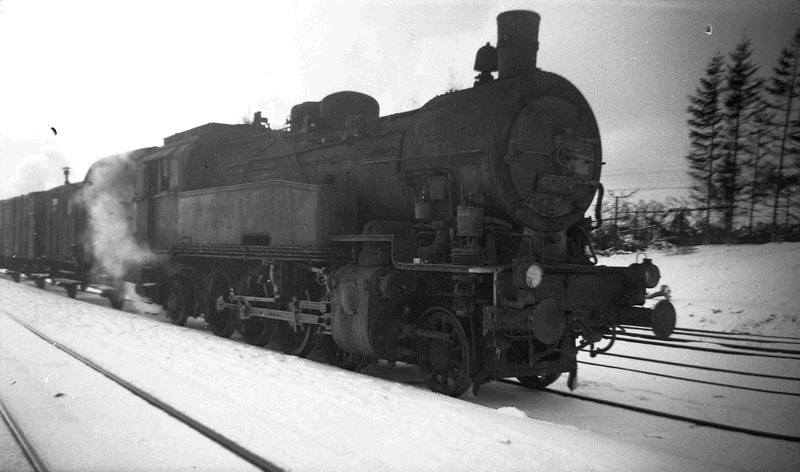
Previous page (October to December 1945)
WINTER 1946 (January and February)
It was about this time that I began to think that if I was careful, I might do a bit of real train-spotting. Most days, one of our trucks went for rations etc. to an army depot near Hagen. I was working on either a three or a four watch system of duties and, with the latter, it was possible to go off for the better part of the day, by taking a lift in one of our trucks. There were no other troops for miles around and there was very little risk of being stopped. Nonetheless, to cover myself just in case, I made out a R.A.F. leave-form stating I was "authorised to travel by military or civilian transport anywhere within a radius of ..... miles of Winterberg, including...." (and I gave a list of local towns). I scrawled an illegible signature at the foot, but was never called upon to show documents, except on one amusing occasion in the summer of that year.
My first trip was down to Bestwig a railway village on KBS 350 and near the junction for the Winterberg line. It had a small undamaged yard and a standard half-moon shed around a turntable. The shed carried a big collection of smaller and older locos BR 38, 55, 56, 58 and 93 for the local branch lines, many of which are now closed. There were BR 44s for the main-line traffic to the west and east. Just east of Bestwig was Nuttlar, the actual Junction for KBS 355 to Winterberg and Frankenberg, and the main line began to climb steeply, at about 1 in 60, out of the Ruhr valley up to a summit tunnel between Elleringhausen and Brilon Wald. BR 44s were also used on this stretch as bankers.
At
Bestwig, there were a Royal
Engineers Corporal and two or three men generally in charge of the railway. The
Corporal was friendly and when I told him of my interest, he said I could go
ahead and visit as often as I wanted. Around the shed were a number of undamaged
derelicts, BR 44s, 50s and 58s, including
44.845 built at Nantes, France in 1942.
That day there were thirteen 44s on shed and I took several interesting photographs. After this first success, I went in mid-February down to Arnsberg, about 28 km west of Bestwig. Here there was a small parallel-road shed by the station, which stands east of the tunnel. The foreman let me look around and when I left I gave him a packet of cigarettes, which was something of a currency at the time. I don’t smoke so this was no hardship and was a good way of saying ‘thankyou’ to these helpful and friendly railway men. They always opened up when they heard of my interest in the railway. Arnsberg had several BR 74 2-6-0Ts for branches in the Sauerland hills and 38s. 58s , 93s and a 92 0-8-0T.
Also there
were one "Kleinlok", Kö

93.239 on northbound freight at Winterberg 14th January 1946
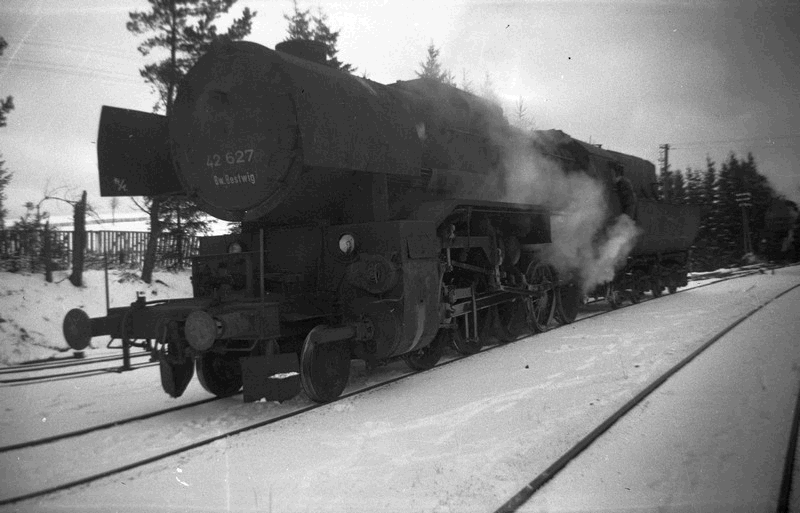
42.627 at Winterberg on 14th January 1946
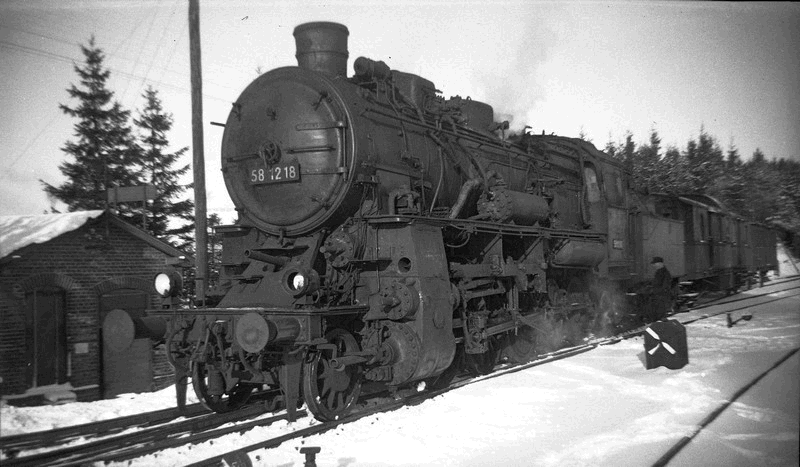
58.1218 (Bw Bestwig) at Winterberg 16th January 1946
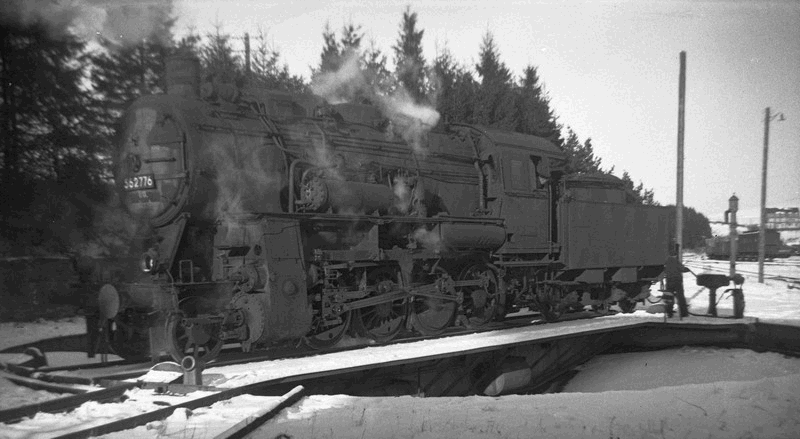
BR 56.2776 on Winterberg station turntable on a snowy 16th January 1946
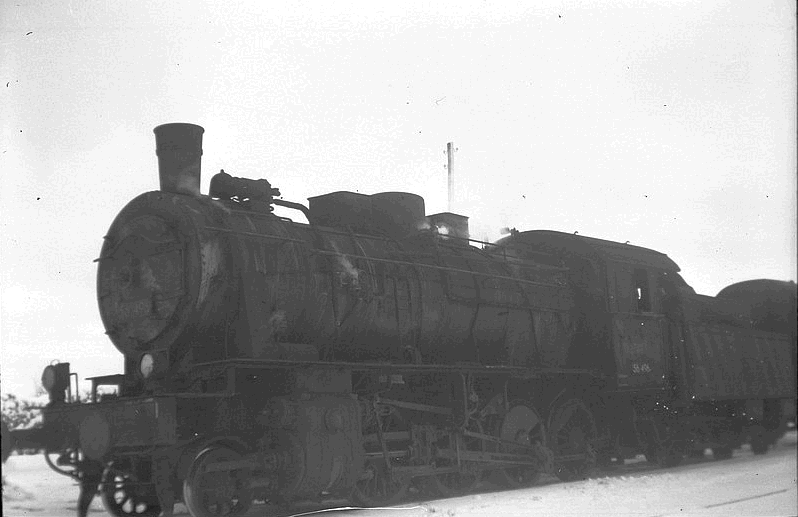
56.491, a rebuilt BR55 at Winterberg on 14/2/46; notice camouflaged tender.
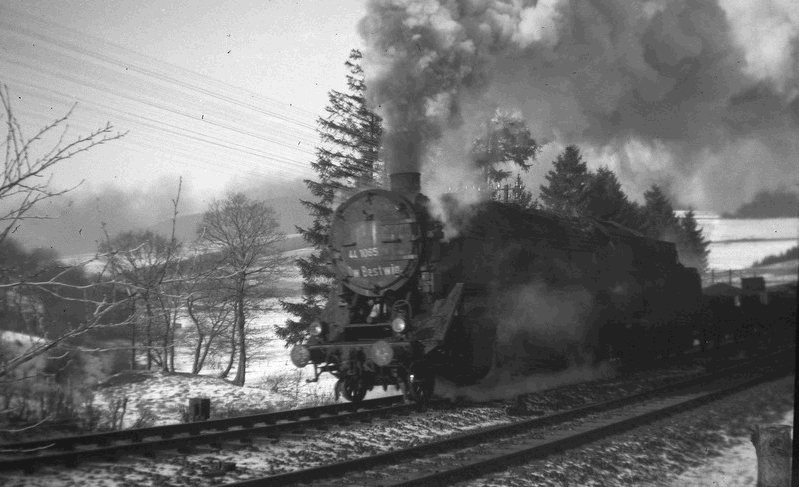
44.1065 heads an eastbound coal train from the Ruhr to Kassel up the 1 in 90 grade between Olsberg and Elleringhausen tunnel on 2nd January 1946
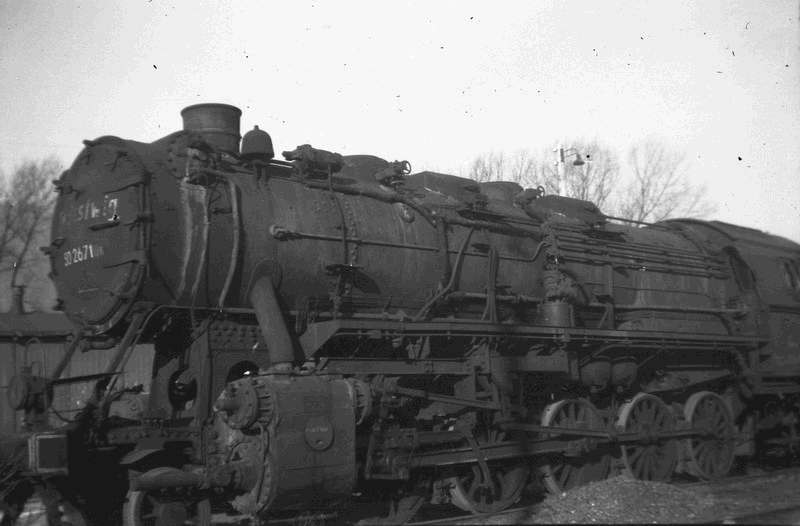
50.2671 ük in the sidings at Bestwig shed on 25th January 1946
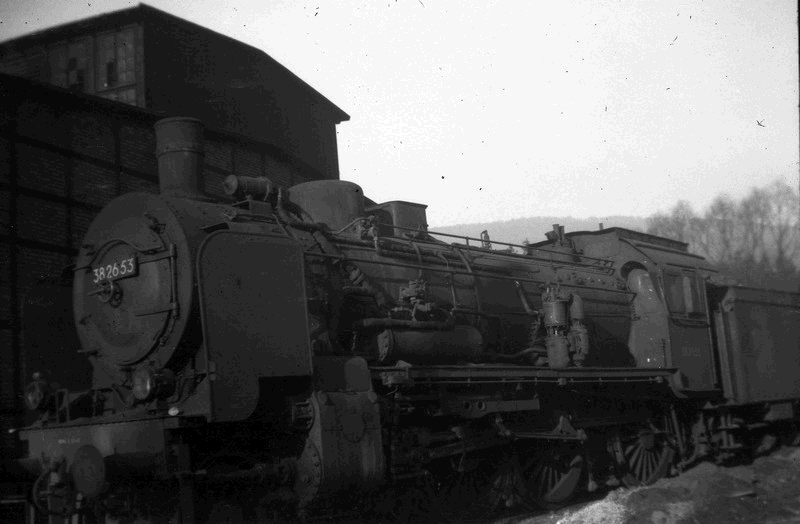
38.2653 is out of steam but serviceable at Bestwig shed on 25th January 1946
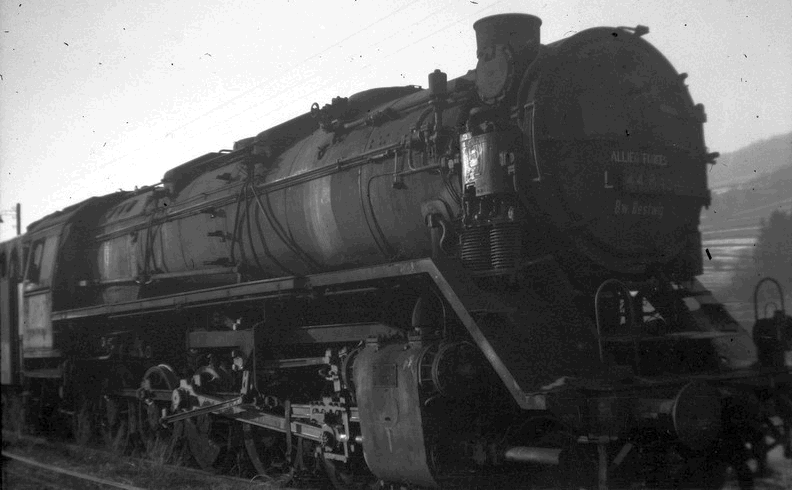
44.845 is stored cold at Bestwig shed on 25th January 1946.
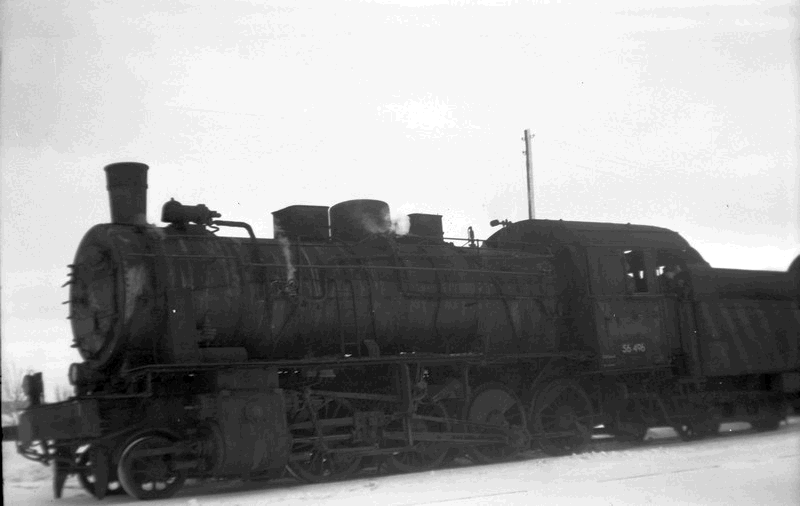
56.496 is at Winterberg on 14th February 1946.
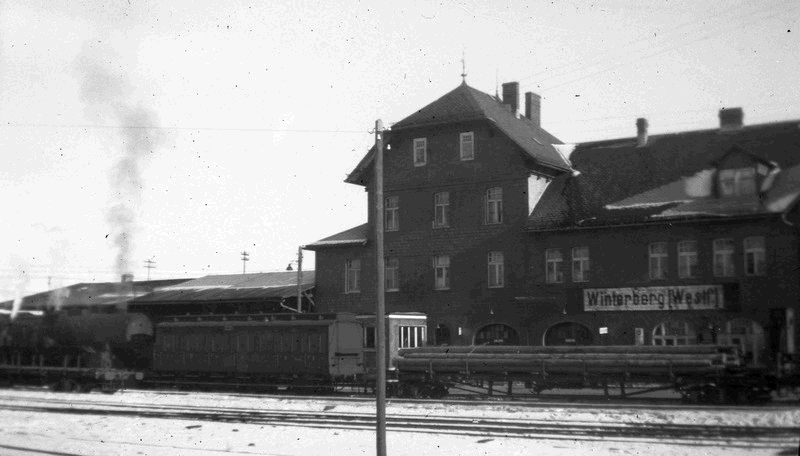
Winterberg station believed to be taken in January 1946.
next page (March and April 1946)